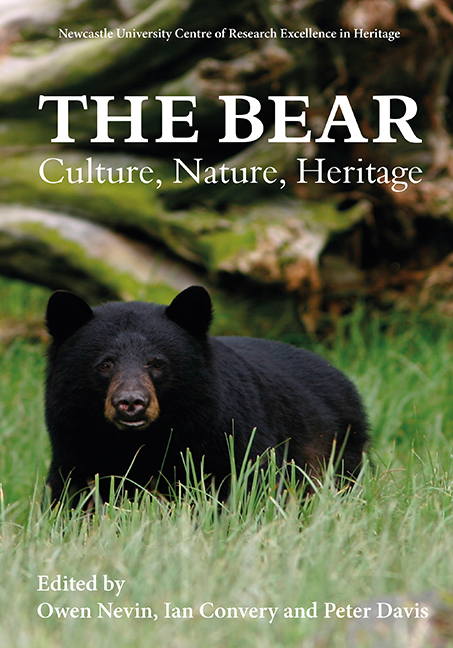Book contents
- Frontmatter
- Contents
- List of Illustrations
- Acknowledgments
- List of Abbreviations
- Foreword: The Bear: A Cultural and Natural Heritage
- Introduction: What is a Bear?
- Bear-People Interactions
- Bears in the Public Gaze
- Bear Biology, Management and Conservation
- Afterword: “It's Me Bear”: Reflections on a Unique Career Working with Bears
- List of Contributors
- Index
- Previous titles
6 - Bears in Children's Literature
Published online by Cambridge University Press: 21 March 2020
- Frontmatter
- Contents
- List of Illustrations
- Acknowledgments
- List of Abbreviations
- Foreword: The Bear: A Cultural and Natural Heritage
- Introduction: What is a Bear?
- Bear-People Interactions
- Bears in the Public Gaze
- Bear Biology, Management and Conservation
- Afterword: “It's Me Bear”: Reflections on a Unique Career Working with Bears
- List of Contributors
- Index
- Previous titles
Summary
This chapter explores bear illustrations in children's literature through a transdisciplinary, boundary-crossing approach that utilises a short story to introduce key points for discussion. Commencing with an overview of bears and the various ways they have been represented in literature, we consider a wide range of disciplines including natural science, social and cultural studies, and children's geographies. We then focus specifically on children's literature, which tends to relate to pedagogies more than other disciplines (Nikolajeva 1996). Yet the aim of most literature is to show or teach us something new, or to encourage us to look at something in a different way, and the distinction between literature created for children and ‘older readers’ is frequently an arbitrary one. The traditional tales from which many children's stories are developed – encompassing folk tales, legends, myths, fables – come from a time before the concept of childhood existed. They have evolved from oral stories that originally contained elements of violence, child abuse/neglect, cruelty and obscenity. Over time they have become sanitised and purified, deemed more fitting for the ears of children (Nikolajeva 1996). The stories we now perceive as classic children's stories were mostly adapted from adult versions, and the methods we chose for doing this reflect how we experience and know the world, and how we want children to do so (Holton and Rogers 2004). However, books for children are not just about the words, the pictures are also important, providing them with an artistic value and stimulating the imagination (Roncken and Convery 2016).
We make the argument that bear illustrations are more than just images: they inform our perceptions and anticipation of the real animal and may determine our resultant behaviour towards it. Our focus may be anglocentric, a reflection of the lived experiences of the authors, however links may be made between the work shared here and work from other cultures, other languages, other ways of being. Bears, in their real and cultural form, are truly globalised creatures. There are eight bear species: American Black Bear, Asiatic Black Bear, Brown Bear, Giant Panda Bear, Polar Bear, Sloth Bear, Spectacled Bear and Sun Bear. They are one of the most widely distributed terrestrial mammals, with a current global distribution including North and South America, Canada, Asia, Europe and circumpolar arctic regions (Bear Trust International 2011).
- Type
- Chapter
- Information
- The Bear: Culture, Nature, Heritage , pp. 67 - 76Publisher: Boydell & BrewerPrint publication year: 2019



